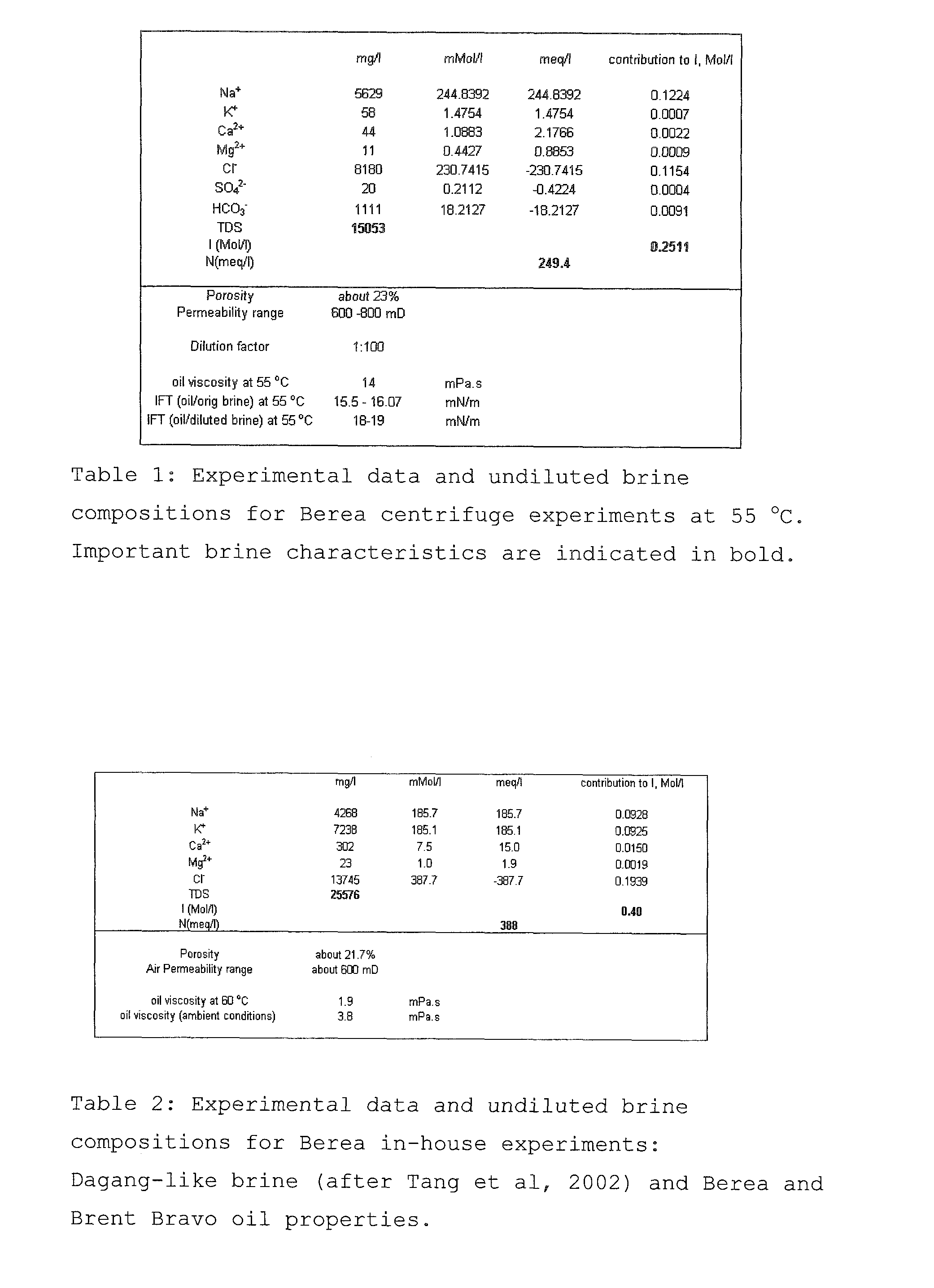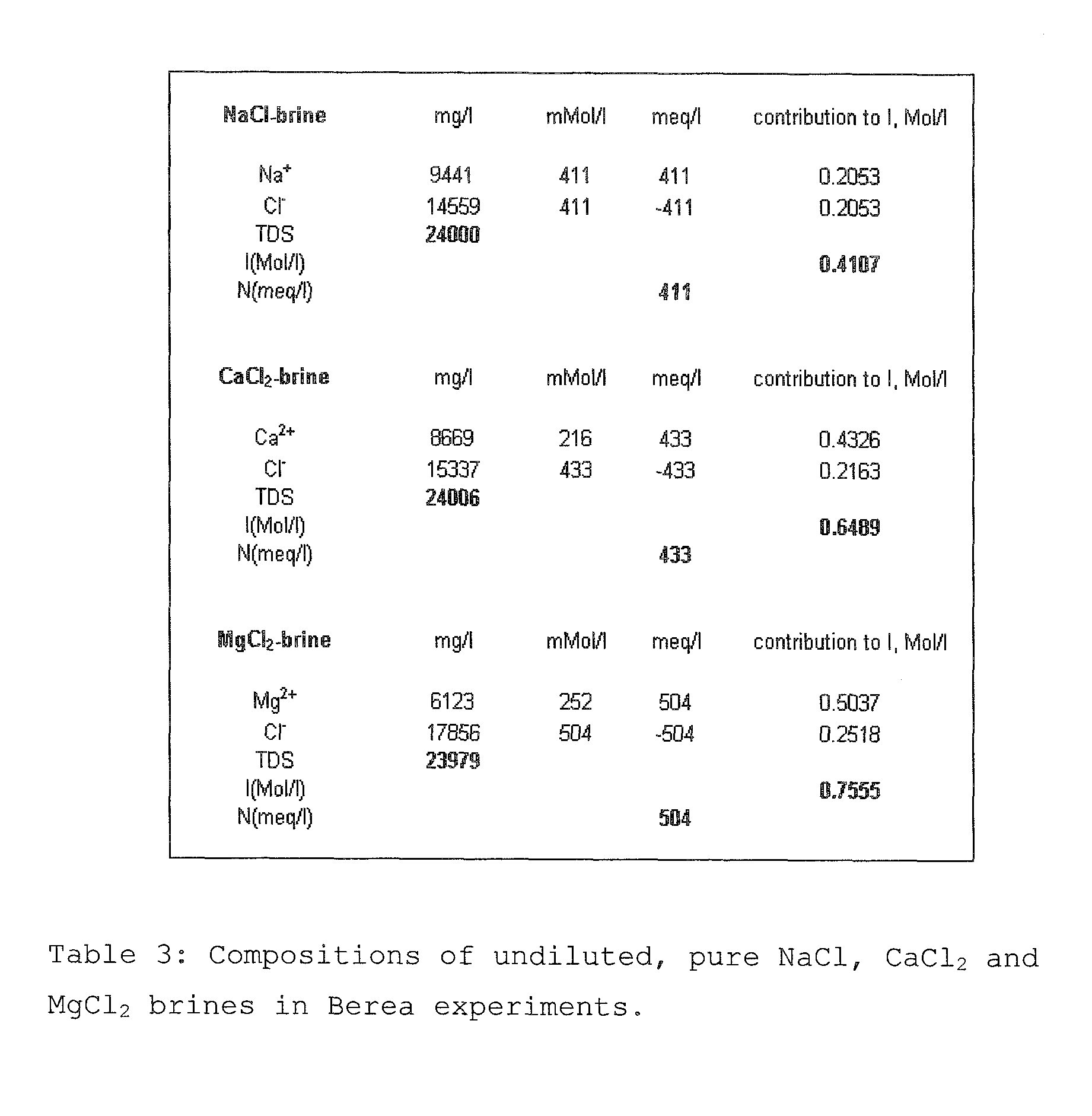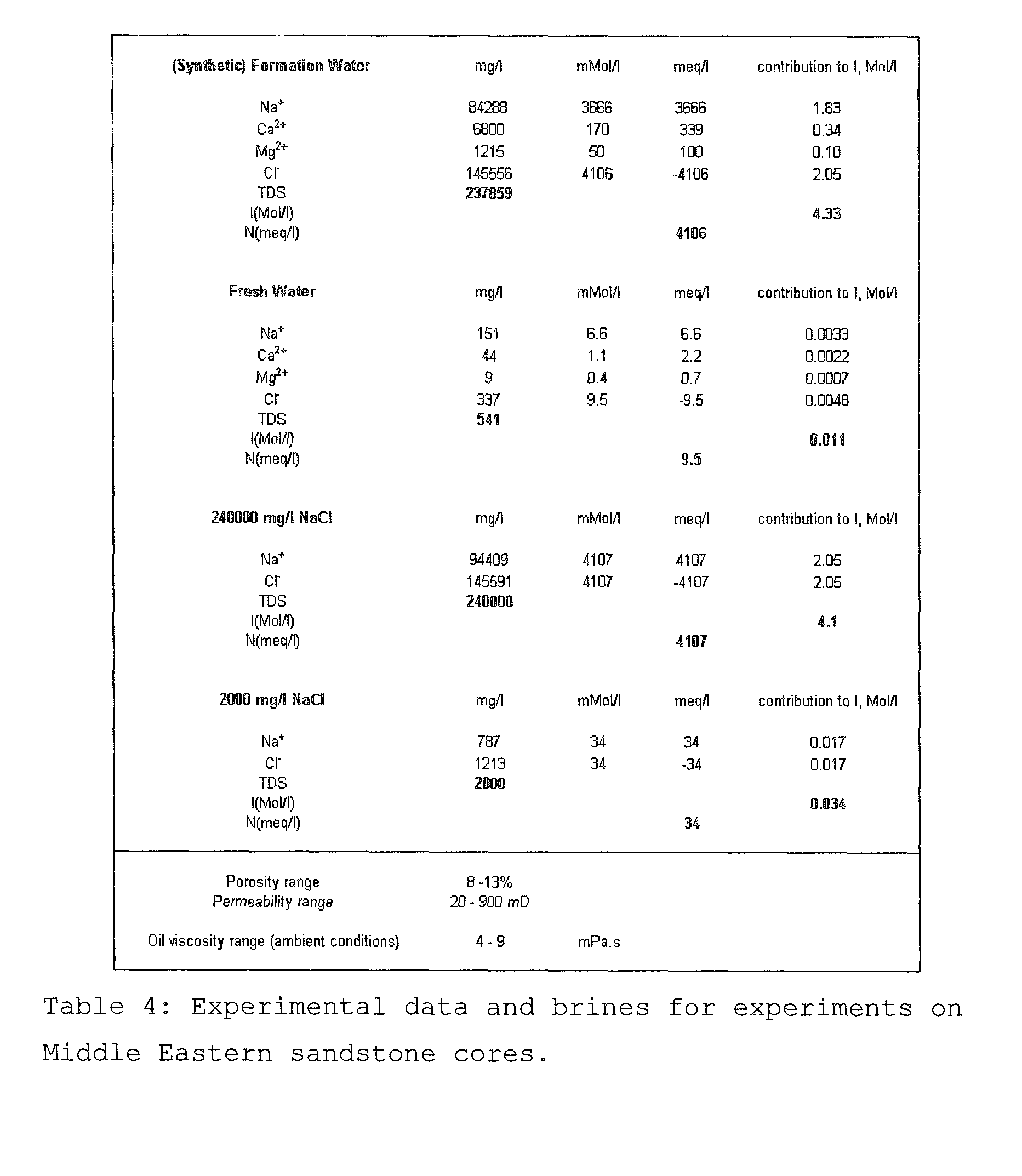Aqueous displacement fluid injection for enhancing oil recovery from an oil bearing formation
a technology of oil bearings and fluid injection, which is applied in the direction of sealing/packing, chemistry apparatus and processes, and well accessories, etc., can solve problems such as leveling ionic strength, and achieve the effect of low ionic strength
- Summary
- Abstract
- Description
- Claims
- Application Information
AI Technical Summary
Benefits of technology
Problems solved by technology
Method used
Image
Examples
example 1
[0220]In this example the following equations (1)-(5) on polymer viscosifying power are used.
[0221]The intrinsic viscosity (m3 / kg) that characterizes a particular polymer solution is defined as:
[ηo]=η(c)-μwc·μw(1)
(in the limit of zero shear-rate and polymer concentration c, in kg / m3).
[0222]Here, η(c) denotes the polymer viscosity at polymer concentration c and
μw=limc->0η(c),
being the viscosity of the brine, in which the polymer is dissolved.
[0223]In accordance with the teachings of the handbook “Viscosity of Polymer Solutions” written by M. Bohdaneky and J. Kovar, published in 1982 by Elsevier Scientific Publishing, the viscosity of a polymer solution at low shear can be written as:
η(c)=μw·(1+[ηo]c+k1·[ηo]2c2+k2·[ηo]3c3+. . . ) (2)
Here k1 and k2 are constants.
The term k1 is called: Huggins coefficient.
A typical range for the Huggins coefficient is between 0.4 and 1.22-2.26 (page 177 of the above-mentioned handbook “Viscosity of Polymer Solutions”).
[0224]It thus follows that at low ...
example 2
Application Example
[0232]The composition of an example formation brine is shown in Table 6.
[0233]It is characterized by overall salinity level of 7878 mg / l and ionic strength I of about 0.133 kmol / m3 (taking the major elements into account). The brine pH is 7.9, hence full ionization may be assumed (δ=1).
[0234]There is a rather significant Ca2+ level of 100 mg / l, indicating that the example reservoir wettability may significantly deviate from purely waterwet state and that there may be scope for IOR by wettability modification to more waterwet state, using the method according to the invention.
[0235]The polymer viscosity in the example formation brine at low shear rate 1 s−1 is shown in FIG. 22.
[0236]The polymer type chosen is a commercially available hydrolyzed polyacrylamide with molecular weight between 18×106 and 20×106 and degree of hydrolysis about 25%. It is experimentally determined that about 1750 ppm of this polymer dissolved in the example formation brine at 51° C. (examp...
PUM
| Property | Measurement | Unit |
|---|---|---|
| viscosity | aaaaa | aaaaa |
| intrinsic viscosities | aaaaa | aaaaa |
| porosity | aaaaa | aaaaa |
Abstract
Description
Claims
Application Information
 Login to View More
Login to View More - R&D
- Intellectual Property
- Life Sciences
- Materials
- Tech Scout
- Unparalleled Data Quality
- Higher Quality Content
- 60% Fewer Hallucinations
Browse by: Latest US Patents, China's latest patents, Technical Efficacy Thesaurus, Application Domain, Technology Topic, Popular Technical Reports.
© 2025 PatSnap. All rights reserved.Legal|Privacy policy|Modern Slavery Act Transparency Statement|Sitemap|About US| Contact US: help@patsnap.com



